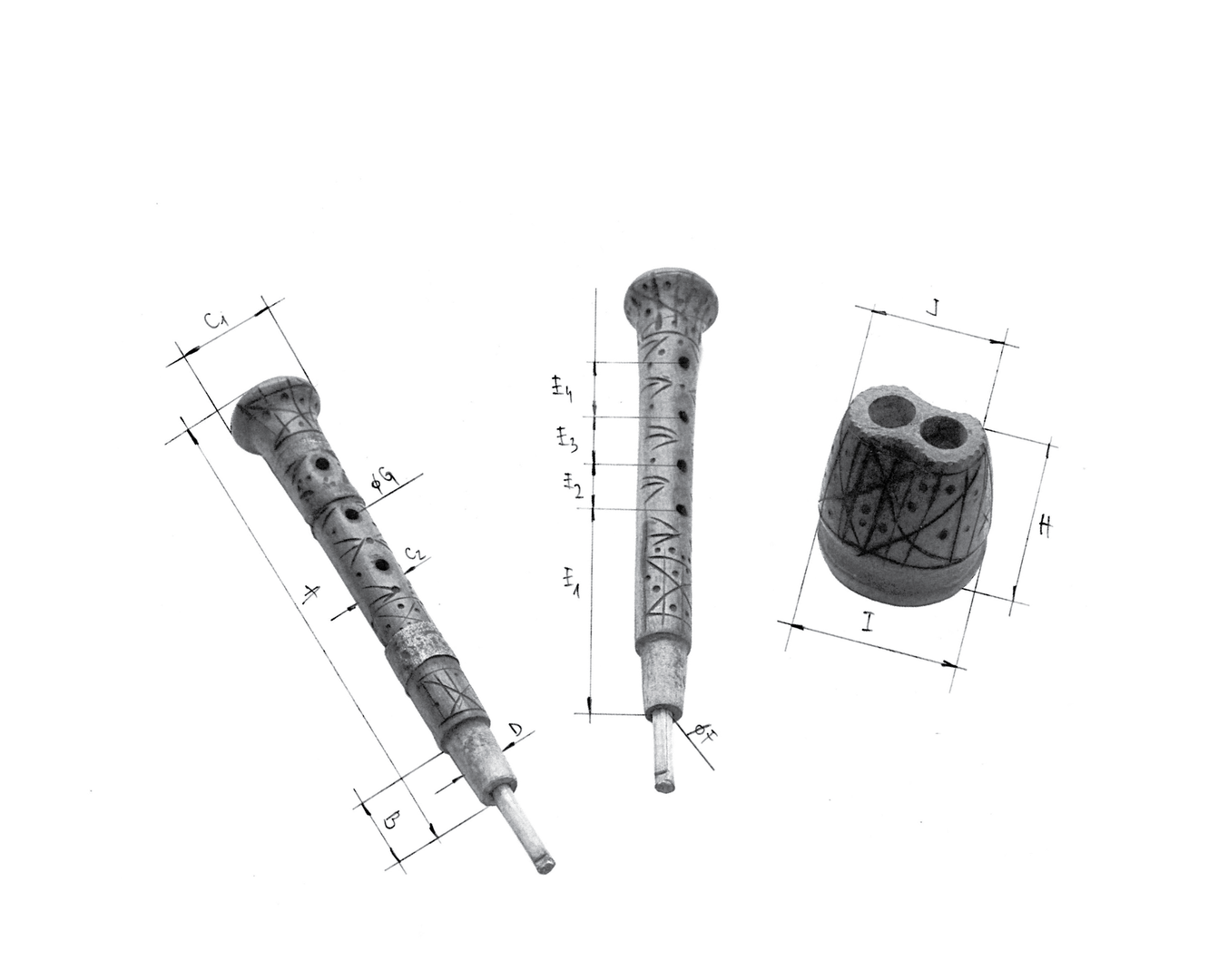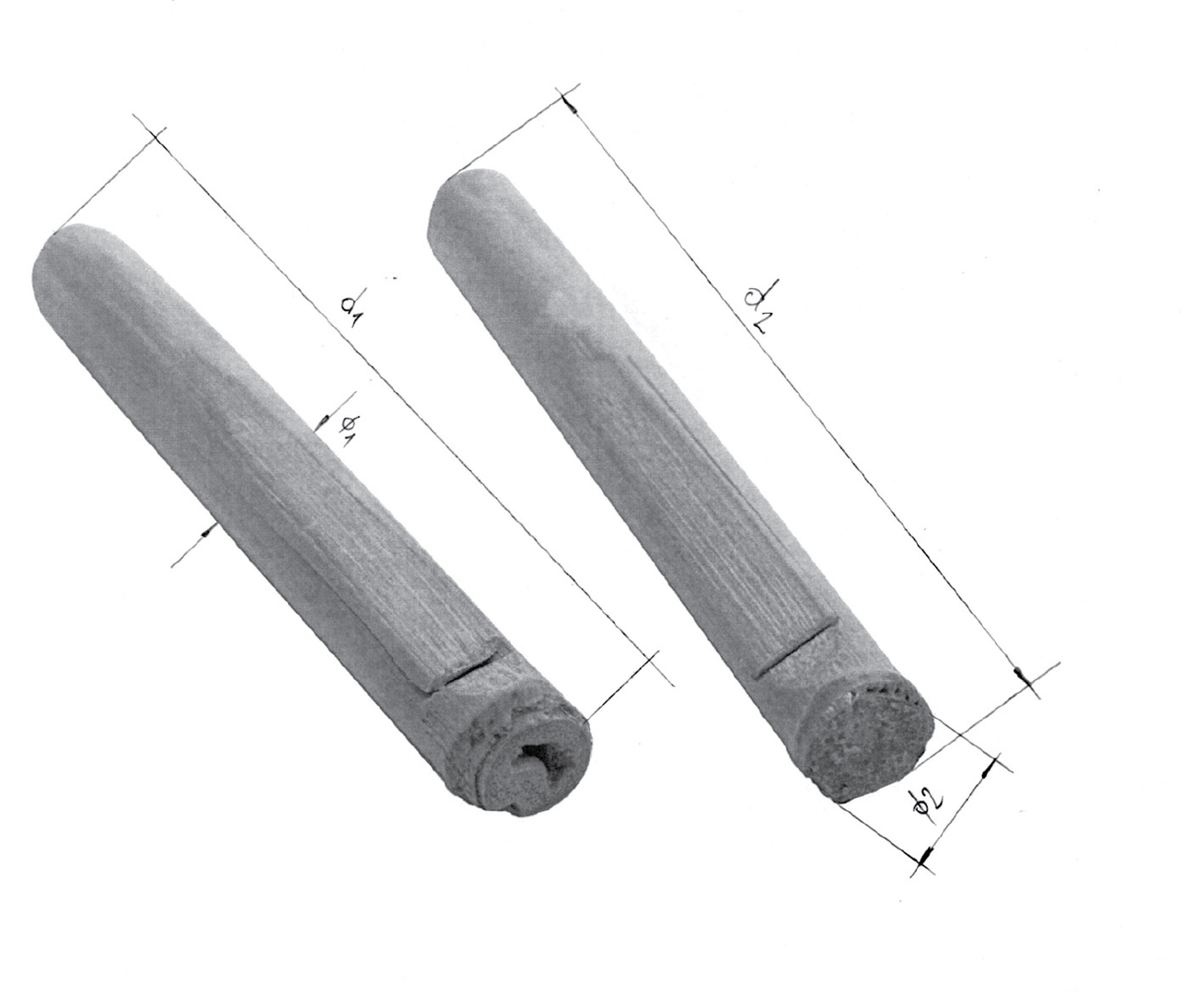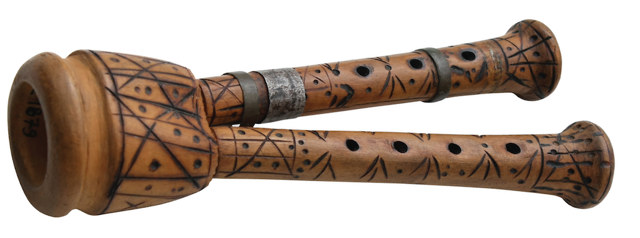Description
Šurle are double pipes with a single reed. The chanter is usually made from two pieces of wood, while it’s made from one piece in rare instances (double mišnice). The fingering is almost identical to that of the double whistle. Šurle and pive are the same instrument, and the only difference is that the pive are regularly played with the use of the bag, which nowadays is unusual for the šurle.
Parts
CHANTER
(kanelice, kanele, sopelice, sviralice, trombete)
Two pipes are inserted into the stock (did). The right one usually has four finger-holes (rarely five), and more recently there is a thumb hole on the bottom side. The left one has usually three holes (rarely four).
STOCK
(did did, didac, tulac, glaulja, grljak, cavecio)
A part that can be tied to the neck of the bag thanks to a groove at the top. Two pipes are inserted in the lower part.
BAG (in pive bagpipe)
(mih, meh, mješina, mišina, fol, ludro)
It serves as an air tank, which enables continuous playing. It is usually made from goat or lamb skin. There are documented cases of bags made of rabbit skin - such mih is used for teaching children how to play the instrument. Two openings on the bag are used. The stock is tied on the neck opening (kolarin), and the blowpipe is tied on one leg. The second leg is (as well as the blowpipe and the stock) tied on the inner side. On the outer side of the lower part the bag is tied so that the skin is firmly tightened in folds.
BLOWPIPE
(kana, kanica, kanelica, civ, bochin)
It is used for blowing air into the mih. It is made of bone, wood or plastic. For ease of use when playing for a long time, a rubber extension can be inserted on the blowpipe. On the lower part of the mouthpiece there is a valve which prevents the return air from the mih.
REEDS
(piski, piveti)
One single reed is inserted into each pipe in the upper part which is then inserted in the stock. The reed is naturally closed on one side by a node and has a downward cut tongue.
Dimensions
Chanter:
- A - the length of the chanter
- B - the length of the tenon
- C1 - the diameter of the bell (the lower part of the pipe)
- C2 - the average diameter of the pipes
- D - the diameter of the tenon
- E - the distance from the top of the pipe to the first hole (E1); the distance between the remaining holes (E2-E4)
- F - the inner diameter of the bore
- G - the diameter of the finger-holes
Stock:
- H - length
- I - upper diameter
- J - lower diameter
Reeds:
Median diameter (Ø) and the total length of the reed (d)
 The chanter and the stock of šurle
The chanter and the stock of šurle
 Reeds
Reeds
